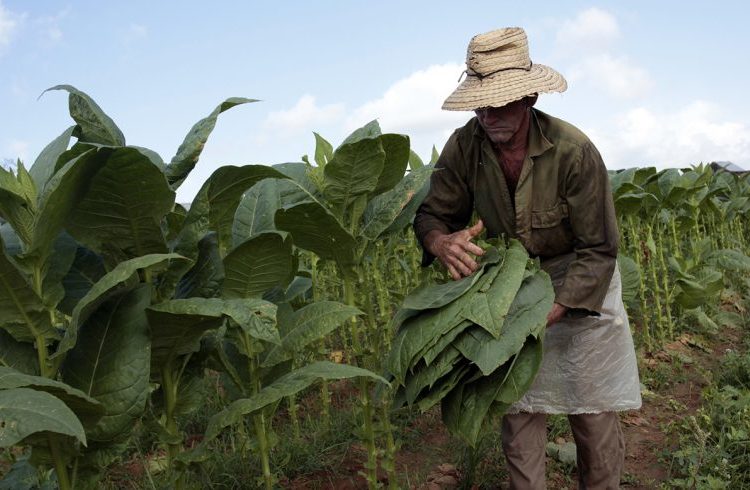Two new and very productive varieties of Virginia tobacco, used in the production of cigarettes, were successfully introduced in the tobacco plantations of Pinar del Río.
The Virginia San Luis 23 and the Virginia San Luis 24 are being tested in the zones of Julián Alemán and Las Martinas, in the municipalities of Consolación del Sur and Sandino, respectively, the daily Granma reported.
Both were obtained in the San Juan y Martínez Tobacco Experimental Station by Master in Sciences Miguel Díaz. They have more useful leafs than the rest of those cultivated until now on the island.
“They have a total of 30, while those which have been planted had 18,” affirmed Doctor in Sciences Nelson Rodríguez, the director of the institution.
This would mean a potential of 2.5 tons of the variety per hectare, which mixed with the Burley variety is used in making mild cigarettes.
Both are due to a collaboration project with Brazil, “which includes tests in the South American country to assess the resistance to wildfire,” a diseases that doesn’t exist in Cuba but does in the geographical area, “which is why it is necessary to prepare for it,” added Rodríguez to Granma.
Virginia tobacco is developed to meet the demand for raw material for making cigarettes in a modern factory that operates in the Mariel Special Development Zone (ZEDM).
Lourdes Vázquez, deputy director of tobacco of Brascuba, indicated in May that the timetable of the Virginia Project plans to obtain 141.4 tons (t) in 101 hectares (ha) in 2017.
For 2020, some 1,850 t is being planned on 967 ha, and for 2030 they would be 2,418 t of Virginia tobacco a year for industrial purposes, in the same land area but with better yields.
The Project is initially being sustained in the Julián Alemán Basic Unit of Cooperative Production (UBPC) of Consolación del Sur, with 100 hectares that have already had yields of between 1.9 t and 2.2 t per ha, depending on the land.
“The recovery of Virginia tobacco, the Virginia Project, was conceived before the Brascuba negotiations to install a factory in the ZEDM; but Mariel, based on the foreign partner’s intention of developing the Virginia tobacco here, and with the better qualities, gave us and Tabacuba the additional element to be able to work,” said Vázquez.
The commercial cultivation of Virginia tobacco started on the island during the 1930-1931 harvest, on the plains of the easternmost province of Pinar del Río, and the original seed arrived from the U.S. state of the same name.
Other varieties in San Juan
In the San Juan y Martínez Experimental Station tests are also being carried out on the agricultural extension of another two new varieties, fundamentally in the cultivation on covered areas to obtain layer leafs to roll cigars.
“One of them is a hybrid (a combination of varieties) and the other has been obtained through the traditional method,” Rodríguez explained.
Other varieties like the Corojo 2012, with a greater resistance to the principal plagues and diseases that affect the crop, have come out of the research center, as well as the Criollo 98, Corojo 99 and Corojo 2006.
Founded in 1937, the Experimental Station has obtained 12 varieties of the types of tobacco in Cuba (dark, Burley and Virginia), as well as the technologies for their cultivation.
Pinar del Río: Cuba’s major producer
Last May, Tabacuba announced that Cuba would conclude the 2016-2017 harvest with almost 30,000 tons of leaf tobacco, a leap in relation to the previous harvest, when its reached 24,000 t. Pinar del Río, the island’s major producer, reached 19,000 t, the largest harvest in the last 10 years.
Cuba invoiced some 445 million dollars for its tobacco exports in 2016, which represented a five percent increase compared to the previous year.










